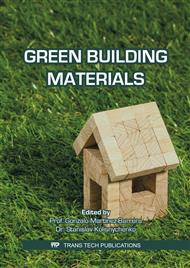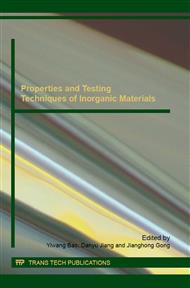p.451
p.455
p.462
p.466
p.472
p.477
p.482
p.486
p.493
Greenhouse Effect Reduction through Sustainable Magnesium Oxide Eco-Cement Products
Abstract:
Portland cement production leads to significant carbon dioxide emission and greenhouse effect. Magnesium oxide eco-cement, which is a mixture of Portland cement, magnesium oxide and fly ash, may be an alternative production. In this paper, the issue is focused on the carbon dioxide absorption ability and mechanical performance of this eco-cement. Several mix proportions of eco-cement were designed to conduct forced carbonation, strength and expansion tests. Also, microstructure analysis after carbonation was conducted. The results indicate that magnesium oxide eco-cement can efficiently absorb carbon dioxide and carbonation can improve mechanical performance substantially, also expansion of the eco-cement is found to fall within the safe limits and possesses good stability and soundness.
Info:
Periodical:
Pages:
472-476
Citation:
Online since:
February 2016
Authors:
Keywords:
Price:
Сopyright:
© 2016 Trans Tech Publications Ltd. All Rights Reserved
Share:
Citation:



